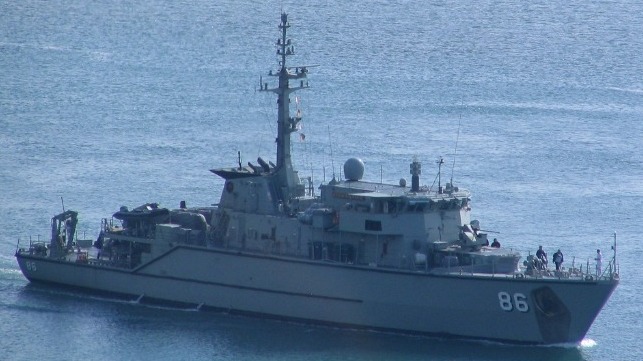Op-Ed: Time for a Minesweeping Force for the Strait of Malacca

[By Greg Mapson]
For the better part of 50 years, NATO has maintained a standing force of mine countermeasure vessels at the ready to respond to a mining incident in the English Channel and approaches.The force originally consisted of seven to nine mine countermeasure vessels from the Royal Navy, German Navy, Royal Netherlands Navy and Belgian Naval Force, which were assigned to the squadron for either six or 12 months to counter the threat of Soviet mines being laid by air or by submarine during the Cold War.
The force still exists, augmented by the Danish and Norwegian navies and split into two groups. Standing NATO Mine Counter Measures Group 1 is responsible for northern Europe, and Group 2 for southern Europe.
My recent Strategist post discussed the threat posed by the arsenal of mines held by China. During the Cold War, China obtained a range of Russian mine types that it has technically exploited, copied and improved to such an extent that it now possesses perhaps the largest arsenal of modern mines in the world.
Several laboratories in China are believed to be studying and developing a range of mine types. These include mobile mines, which are torpedo-like devices that can be fired from submarines and can self-navigate over substantial distances to their resting place, perhaps inside a harbor, and rocket-assisted rising mines, which blast upwards at a ship passing overhead. Another variant is a capsule, which rests in deep water waiting for a submarine to pass before releasing a torpedo to attack it.
China has been building such weapons in abundance. Other, less sophisticated mines can be launched from aircraft, surface ships, submarines, merchant ships and fishing vessels. They are effective and relatively cheap to manufacture. In recent years, Chinese merchant ships and fishing vessels have been observed practicing mine-laying, as have the large array of other dedicated Chinese navy mine-layers.
Shift focus now to the Malacca Strait, one of the world’s most important shipping lanes, through which some 94,000 ships pass each year. Their cargo includes a quarter of all global oil supplies. A mining incident in the Malacca Strait would be cataclysmic for many Asian nations. Mine-countermeasure assets, skills and practices among Southeast Asian navies bordering the Malacca Strait are poor, except for those of Singapore, which has continued to build its mine countermeasure capabilities.
To counter the growing threat in the region, Australia needs to champion the establishment of a standing mine countermeasure force for the Malacca Strait. This initiative could be forged under the Five Power Defence Arrangements. Australia, the UK, New Zealand, Malaysia and Singapore all have the capacity to contribute to such a standing force, which should be ready to react at short notice to any mining incident in the strait or its approaches.
Rotating the Huon-class coastal mine hunters through such a force in Singapore would be the basis of Australia’s commitment. New Zealand could assist with autonomous vehicle teams and Malaysia with a minehunter. Britain’s Royal Navy could also deploy a mine-hunting vessel or an autonomous vehicle team.
The standing force should commence operations under the Five Power Defence Arrangements, but vessels from other nations (such as Indonesia, Thailand, South Korea, Taiwan and Japan), along with the two U.S. mine countermeasure vessels based in Sasebo, could also be invited to participate as required.
Greg Mapson, a former commander of the Royal Australian Navy’s mine countermeasure forces, has carried out specialist training in a number of world navies and conducted extensive work on autonomous mine countermeasure systems.
This article appears courtesy of ASPI's The Strategist blog and may be found in its original form here.
The opinions expressed herein are the author's and not necessarily those of The Maritime Executive.

